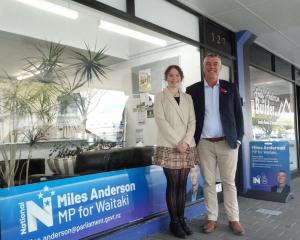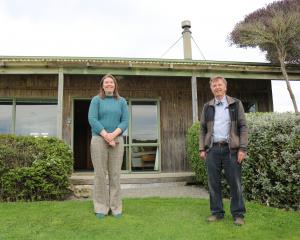
But after it was initially proposed for the base of the colony’s nesting site on the closed 1884 Sumpter Wharf, the location is unconfirmed. Oamaru Blue Penguin Colony research scientist Dr Philippa Agnew called this week’s decision to reconsider the location for the viewing area on the wharf "excellent". Dr Agnew, who was recently appointed to the Otago Conservation Board, spoke before Tuesday’s council meeting to urge councillors not to go ahead with a plan to reclaim some of the abandoned wharf.
She said the wharf was not only home to the northernmost breeding population and probably the largest colony of Otago shags, but five other species of birds could also be seen on the historic wharf: spotted shags, pied shags, little shags, red-billed gulls and white-fronted terns.
"On any given day if you go down there and take a photo you can see them all right there, easily, it’s cool," she said.
"They are an asset."
She advocated for an on-shore, raised platform with signage explaining the birds and said with two marine reserves potentially being established along the Waitaki coast — in front of the Waitaki River mouth and Tavora — there was potential for more marine-focused tourism and research in Oamaru Harbour. She said Cr Hugh Perkins’ suggestion of installing a camera at the end of the wharf "great".
The council approved the $35,000 budget for the project, but Cr Jim Hopkins opened the placement of the viewing area up to be "in the vicinity" of Sumpter Wharf.
"We’re obviously going to have to put some thought into ‘where’," Cr Hopkins said.
Cr Jan Wheeler said with the amount of birdlife in the area "we need to delay this until we talk to the experts". Cr Perkins said the viewing area should be constructed in a way that "enhances" an eco-tourism attraction, and warned about encroaching into the birds’ space.
"It’s a death by 1000 cuts, and you never know which cut will be the one when the birds decide the wharf is not the place to be," Cr Perkins said.
Cr Colin Wollstein said he believed from a photography point of view the end of Sumpter Wharf was "not the place to be". Cr Bill Kingan said Dr Agnew’s proposal made"quite a bit of sense".
Dr Chris Lalas, of Dunedin, who has monitored the birds since 1977, counted about 346 nests on Sumpter Wharf last spring, and said last month he expected Sumpter Wharf to become the species’ largest colony. At the same meeting the council approved $20,000 to move the historic signalman’s hut, $20,000 to install globe lighting on the Esplanade, and $1500 for a Holmes Wharf entrance.












